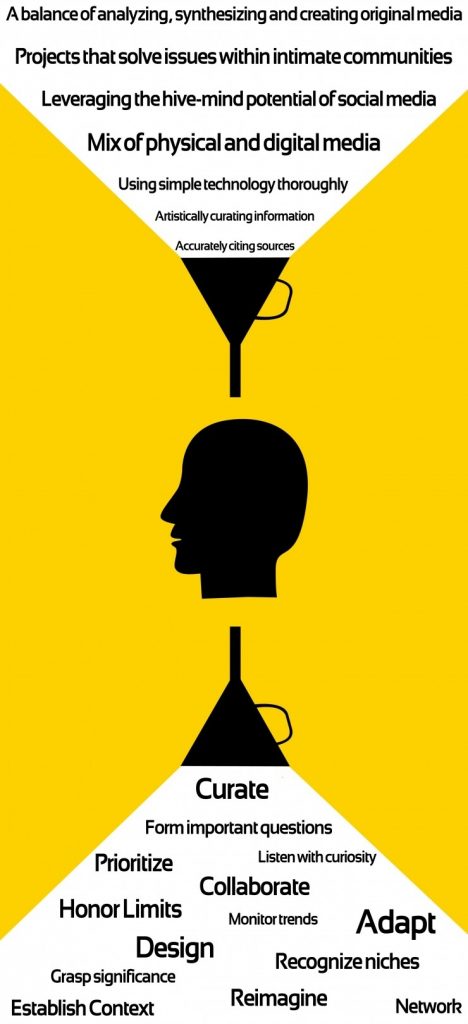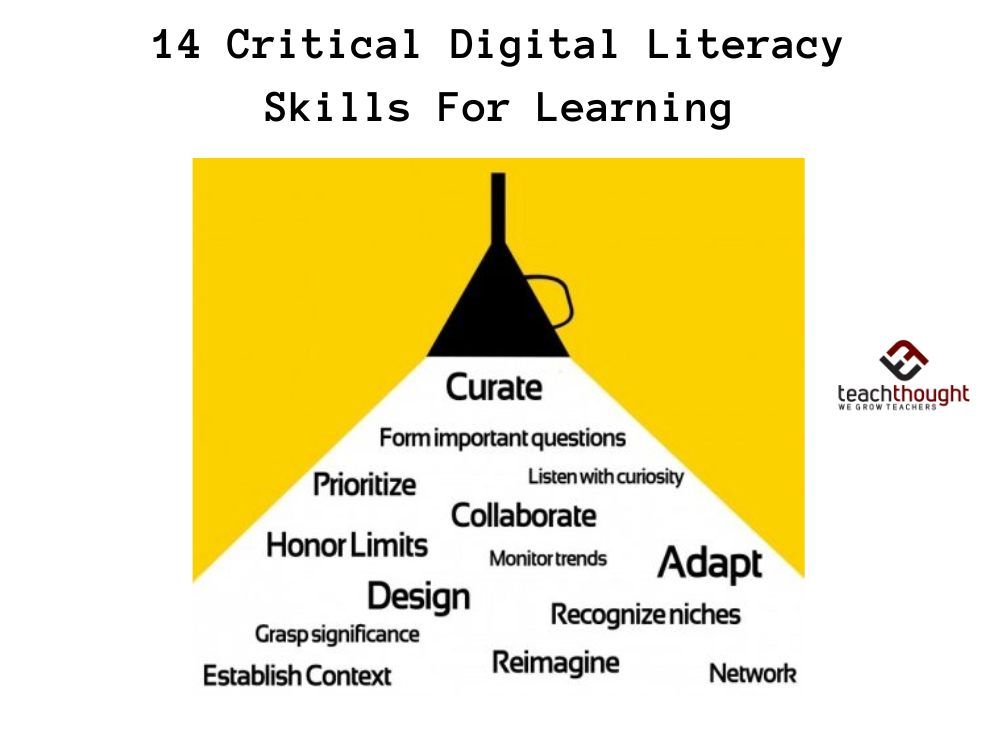What Are The Critical Digital Literacy Skills For Learning?
by Terry Heick
This post was written in 2014 and most recently updated in 2022
Traditionally, learning is formatted by content, and that content is formatted again by content areas (usually reading, writing, math, science, and social studies).
Learning is evolving–and not simply by the tools that actuate it. The process of adopting new learning domains and materials has exposed the need for new critical digital literacy skills. It is debatable whether or not such skills need to be expressly taught, or if they’re simply the residue of intense, well-designed learning experiences.
Whether or not they’re old learning with a new coat of paint, or genuinely represent a paradigm shift in learning priorities, it is difficult to doubt their constant application in a 21st-century world that is connected, digital, omni-social, and multi-faceted. No longer is it considered sufficient to teach children to simply read and write, and fill in the middle with discrete facts about history, mathematics, and scientific processes.
There are new skills–or newly underscored concepts–that transcend content areas, in this way functioning as natural pathways out of old thinking. If 1995 saw students move from class to class to learn math, science, and language arts, evolved currencies–new ‘players’ in the game of learning–allow barriers between these content areas (and even grade levels), to dissolve.
These currencies have been tossed around educational banter for years now, movingly so by the late Ken Robinson’s ‘Changing Educational Paradigms.’ Creativity, problem-solving, collaboration. This is not new. But what might be new is recognizing that they aren’t just singular ideas worth our pursuit or emotionally charge endorsement, but rather mechanisms that can connect an infinite number of topics.
One can problem-solve across and within topics formerly thought of as ‘science’ and ‘history,’ and moving between them both moves them beyond academia and back to the ‘real world.’ This is possible because flexible cognitive and creative capacities are on stage, not rigid facts or even thematic essential questions that are content-limited.
With the proper technologies, they are content-infinite. When the learning goals supersede the content areas, things begin to change. As the currencies in learning evolve, they necessarily evolve the learning with them.
Currency is just a way of expressing value. Knowledge, gold, respect, or social media all represent kinds of currency. And in 2022, it could be that the currencies in learning are changing.
1. Curate
2. For important questions
3. Prioritize
4. Listen with curiosity
5. Collaborate
6. Identify one’s own knowledge gaps and limits
7. Monitor trends
8. Adapt
9. Design
10. Survey and leverage niches
11. Grasp the significance
12. Establish context
13. Reimagine
14. Network


